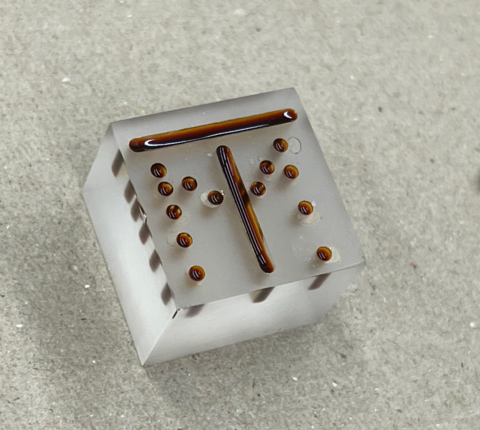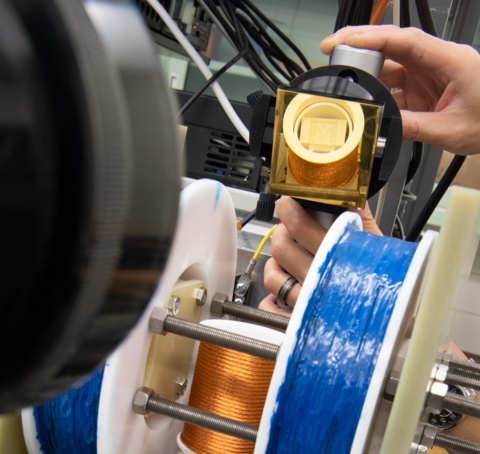Harmonics in the magnetic signals from the nanoparticles in Thermal MagIC work in a similar way. In this case, though, the main frequency isn’t sound waves but a pulsing magnetic signal produced by the nanoparticles. The harmonics are pulsing magnetic signals of higher frequencies, produced by a unique recipe of materials and conditions in the system.
In the current study, researchers found that measuring higher harmonics (the harmonic signals with higher frequencies) rather than lower harmonics gave them better spatial resolution—that is, they were able to distinguish the four wells from each other, even when they were spaced quite closely (see graphic below). Measuring the ratio of a higher harmonic to a lower harmonic gave them an even clearer picture.
So please consider turning off your ad blocker for our site.
Quality Digest does not charge readers for its content. We believe that industry news is important for you to do your job, and Quality Digest supports businesses of all types.
Thermal MagIC consists of two systems working together.
Thanks,
Quality Digest
منبع: https://www.qualitydigest.com/inside/innovation-news/nist-works-thermal-magic-011624.html
Left: Diagram of the series of tiny wells, in clusters of fours, filled with solution. Each well in a foursome is spaced away from the other wells by a certain amount, anywhere from 0.1 mm (very close together) to 1 mm (farther apart). Right: The magnetic particle image, showing distinctions between the wells spaced farther apart but not between the wells spaced more closely. The dashed red circle in both images shows the foursome of wells spaced 0.5 mm apart. Credit: NIST.
Our PROMISE: Quality Digest only displays static ads that never overlay or cover up content. They never get in your way. They are there for you to read, or not.
The next big milestone will be the first measurement over a temperature gradient, which would allow Thermal MagIC to graduate to a true temperature imaging system.
The second part comprises the instrument that excites the tiny spheres magnetically and then reads out their signal. (See animation.)
The first part consists of the sensors themselves: nanometer-sized spheres whose magnetic signals change with temperature. These tiny particles, made of iron oxide, would be incorporated into the liquids or solids being studied.
The paper’s authors include Thinh Bui, Mark-Alexander Henn, Weston Tew, Megan Catterton, and Solomon Woods.
Innovation
NIST Works the Thermal MagIC
Digging into the details of an ambitious new ‘thermometry camera’
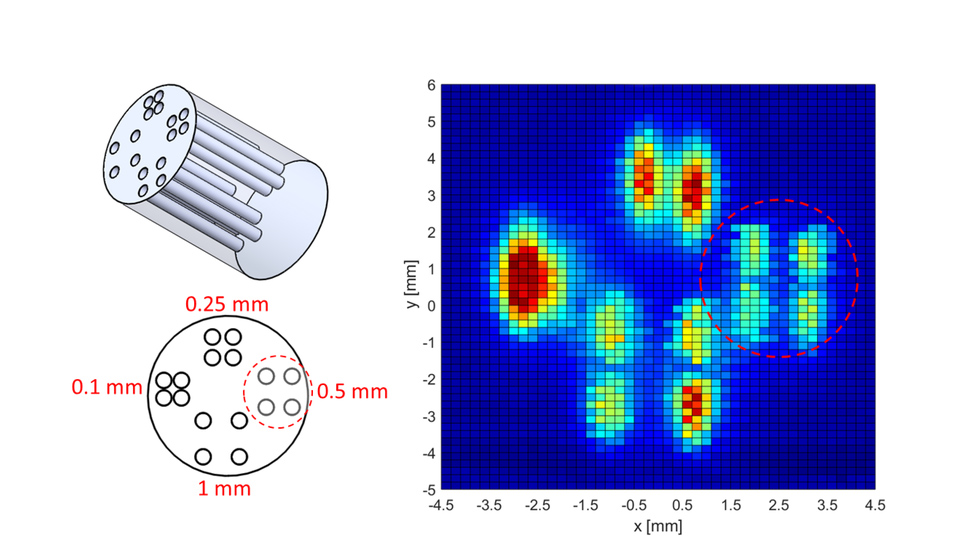
With this setup, they were able to assess temperature differences to within just 500 millikelvin (thousandths of a kelvin) in a volume of just 63 nanoliters (billionths of a liter).
“How do you noninvasively measure a temperature inside a living system such as a human?” asks NIST’s Thinh Bui. “Or in other environments that may be hard to access—say, the temperature inside a Kevlar vest as a bullet penetrates it. How do you have access to that? You can’t stick a traditional thermometer in there.”
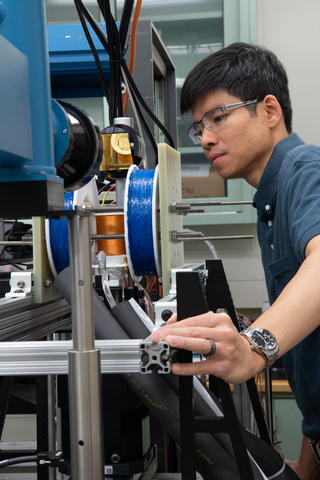
Thinh Bui with the Thermal MagIC system. The nanoparticle thermometers are suspended in liquid that’s been piped into tiny wells drilled into a quartz glass cube about the size of a paperweight. This cube sits in the middle of a coil (gold-colored, center). You can see the cube reflected in the mirror above the coil. The tiny wells in this cube form the letters “T” and “M,” which stand for “Thermal MagIC.” Additional coils (blue) surround the cube, providing changing electromagnetic fields that allow the researchers to scan the 3D image point by point. Finally, the nanoparticles are exposed to different temperatures by liquid cooling via the tubing visible beneath the coils. Credit: Jennifer Lauren Lee/NIST |
To address these needs, NIST researchers are working on an ambitious project called Thermal Magnetic Imaging and Control, or “Thermal MagIC.” Thermal MagIC measures the magnetic responses of nano-sized (on the order of billionths of a meter) spheres, made of metal or other substances, embedded in the object being measured. The magnetic signals collected by the system correspond to specific temperatures. Going beyond simply measuring temperature, the Thermal MagIC researchers aim to make a thermometer with high spatial resolution—a temperature imaging system.
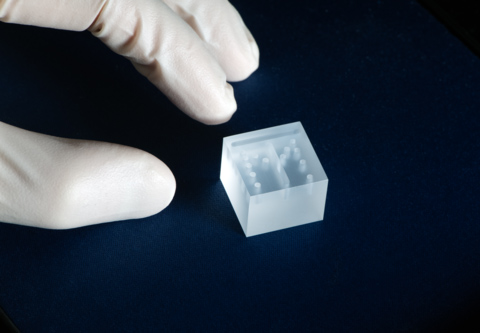
A small quartz glass holder full of small wells that can be filled with a solution containing the nanoparticles whose magnetic responses correspond with specific temperatures. Credit: Jennifer Lauren Lee/NIST |
Published: Tuesday, January 16, 2024 – 12:01



